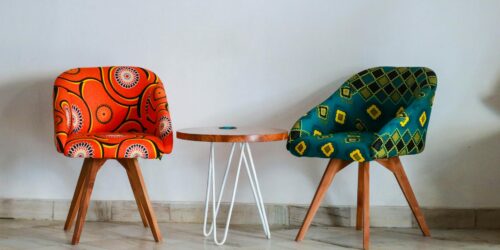As an avid collector of mid century modern furnishings and an admirer of designer Adrian Pearsall, I often find auctions presenting items with such misleading titles or descriptions as “… in the style of…”, “… era of…”, and so forth. Obviously, this makes it difficult for those who (like me) are looking for authentic vintage pieces; particularly if looking for pieces that have not been subjected to the value-stripping “refinishing” process.
This guide presents resources and information to assist you in answering the question, “Is it Pearsall?”
Background & History
Pearsall’s company, Craft Associates (Later, Craft Associates, Inc.), was founded in 1952 in Wilkes-Barr, Pennsylvannia. While the physical location of the company changed over time (and due to expansion), all pieces of the line originally carried a manufacturer’s tag that reads: Craft Associates, Wilkes-Barre Pennsylvannia.
During the 60’s, Pearsall partnered with Davison to form Davison-Pearsall, Inc; a company based out of Ashville, North Carolina. Pieces from this partnership are labeled accordingly: Davison-Pearsall, Ashville, North Carolina.
In 1968, Craft Associates was sold to the Lane Company. Interesting trivia: Post-purchase, Lane retail “brutalist” or “cubist” wood furniture that are often wrongly attributed to Paul Evans – not Adrian Pearsall for their design.In 1972, Pearsall partnered with John Graham to form Comfort Designs, based out of Kingston, Pennsylvannia. He remained with Comfort Designs until his retirement in the ’80s; little information is available on specific Pearsall designs from this company.
Pearsall occasionally also worked privately, designing upon commission. It is unknown if any of those custom designs have ever come to market or if they would be marked or signed in any fashion.
Verification for Pearsall Designs
Unfortunately, you will find most eBay auctions are for pieces that no longer have their tags (due to reupholstering or simply being pulled off/disposed of by previous owners); I, myself, have auctioned pieces regrettably lacking their manufacturing tags.
So, naturally, it is highly recommended to develop insight to the design style and examples of Pearsall designs.
Fortunately, the Pearsall family is slowly placing information online; a catalog of his designs (from Craft Associates, Craft Associates, Inc., and Davison-Pearsall, Inc.) may be found online at Adrian Pearsall dot com, forward-slash catalogs dot htm (The family has apparently decided to personally research and verify due to unapproved “reproduction”).I continue to seek examples and attributions of his work with Comfort Designs, but have had little success. Due to this, I would caution buyers in relation to auctions for Pearsall designed pieces from Comfort Designs without demonstration of provenance (i.e., authentication).
Pearsall Influences and Design Style Elements
Pearsall style is often attributed to Kagan (as Kagan was more “known” at the time) and it is reasonable to assume that he was heavily influenced by the work of Kagan. His early designs were metal and glass for accent pieces, with warm woods (walnut in particular) being a marked preference throughout his career. He also incorporated geometric or highly angular shapes in his work; these elements are now commonly referred to as “atomic” and Pearsall is easily categorized as an American leader in “atomic design” within the mid century era.
Other stylistic markers of Pearsall design include the extravagant “high back” design of armchairs, flanged or angular resting arms, shaped wood arm covers or highlight elements, and the use of snap or strapped on mid-back or neck pillows in his occasional chair designs. Additionally, the swooped or “gondola” shape of sofas, with heavy wood accenting, the combination end table and sofa designs (with wood, marble, and occasionally, reversible end table toppers for the combination pieces).
Little known fact: Pearsall was the creator of the “beanbag” chair, though mainstream offerings did not highly incorporate the design.
Refinished or Original?
Pearsall designed frames for chairs and sofas were primarily natural finished walnut when wood was used, though there are a small selection of examples where “blonde” and “ebony” stains were offered. Early works offered wrought iron, particularly dinette sets/chairs, though these migrated to wood frames as Pearsall’s work expanded.
The usual caveats for vintage condition apply:
- Expect to find nicks/dings in the wood.
- Expect that the finish will be worn away in areas of heavy contact/use, particularly the wood of armrests.
- Expect that there may be small cracks and indication of dryness.
- Expect that leg caps may be pitted, tarnished, encrusted, or worn.
These “imperfections” are NOT a bad thing. In fact, the pieces are more collectible/valuable when they have their original finish and the patina/wear that their vintage status deserves.
It is recommended that you ask specifically on whether or not the item was refinished by the current owner as well as whether or not they have direct knowledge of refinishing of the item.
Summary
As always, communication and questions are the best way to investigate the legitimacy of assertions in auction text (or to discover the use of clever wording to imply attribution where none otherwise exists). Hopefully, the above information, combined with one’s own attention to detail and homework, will ensure that your search for authentic Pearsall design and pieces is a fruitful one!
